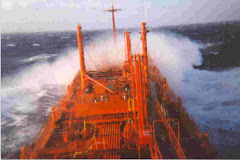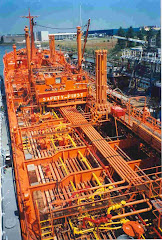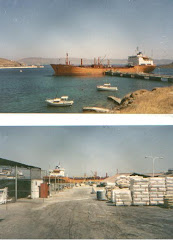Despite present historically low freight rates, dry bulk owners continue to talk up their book with very rosy demand projections, as demonstrated in a recent Capital Link webinar on the dry bulk sector. Yet China observers see a hard landing coming and already a very serious real estate slow-down. Last November, Chinese steel output was down -8.8% month-on-month, down for the sixth month in row.
Patrick Chovanec, a professor at Tsinghua University's School of Economics and Management, reports that Chinese domestic iron ore prices have plummeted as unused stockpiles have accumulated. In addition, more than one-third of Chinese steelmakers saw serious losses in October and November, and the industry as a whole saw a net loss of RMB920 million ($146 million) excluding investment gains. Chovanec sees real estate affecting as much as 20-25% of Chinese GDP. He makes the case of overall Chinese GDP growth down from 9.2% to 6.6% this year.
Wall Street shipping analysts like Cantor’s Natasha Boyden have begun taking a pessimistic view of 2012, expressing “concerns about a Chinese economic slowdown mean that there are real risks to weaker Chinese steel production growth in 2012” Evercore’s Jonathan Chappell expressed similar concerns about the oil tanker market due to slowing Chinese crude imports.
By contrast, RS Platou like many other shipping industry analysts, projects world trade in dry bulk commodities to increase some 5-6% per annum with iron ore and coal as the strongest drivers for tonnage demand. Participants in a recent Capital Link dry bulk webinar are similarly bullish on dry cargo demand from rising world steel production and fledgling Chinese coastal trade that soaks up dry bulk tonnage.
The conventional dry bulk industry viewpoint is that 2012 will continue to see low freight rates due to order book overhang, rather than any significant drop in demand. The tonnage supply-demand gap will narrow and finally will turn positive in 2013, bringing up rates. Jefferies’ Doug Mavrinac shares this recovery scenario.
No one expected the fall in dry cargo rates to be as large as it has been. Dry cargo owners are now suffering from the same margin pressures as their tanker owner brethren. There is a rash of cargo operators in increasing financial difficulties. The recent Deiulemar case, for example, led to the cancellation of a contract with Paragon for its Supramax tonnage. Paragon’s stock has been below $1 dollar since last fall. Now Cantor is setting a price target of 30 cents for Paragon stock with its Supramax tonnage on the market at rates close to vessel operating costs. Paragon is also facing loan covenant violations from deteriorating loan to hull value ratios.
There are plenty of other listed dry cargo operators who made over-valued purchases in the boom era and are saddled with very high leverage: Eagle Bulk, Excel Maritime Carriers, just to name two. They all have vessel provider business models with heavy exposure to charterer counter party risk and spot rates that cannot cover their debt obligations.
Indeed, 2012 may be the dry bulk sector’s turn to suffer what tanker owners like General Maritime and Frontline have been going through for some time now.
All this makes 2013 a very crucial year. In such a tight scenario, disappointing Chinese growth and lower demand for dry bulk raw materials for its steel and construction industry could mean serious structural market disruption unlike any we have seen in shipping since the 1980’s and aftermath of the petrodollar boom.
Wall Street shipping analysts like Cantor’s Natasha Boyden have begun taking a pessimistic view of 2012, expressing “concerns about a Chinese economic slowdown mean that there are real risks to weaker Chinese steel production growth in 2012” Evercore’s Jonathan Chappell expressed similar concerns about the oil tanker market due to slowing Chinese crude imports.
By contrast, RS Platou like many other shipping industry analysts, projects world trade in dry bulk commodities to increase some 5-6% per annum with iron ore and coal as the strongest drivers for tonnage demand. Participants in a recent Capital Link dry bulk webinar are similarly bullish on dry cargo demand from rising world steel production and fledgling Chinese coastal trade that soaks up dry bulk tonnage.
The conventional dry bulk industry viewpoint is that 2012 will continue to see low freight rates due to order book overhang, rather than any significant drop in demand. The tonnage supply-demand gap will narrow and finally will turn positive in 2013, bringing up rates. Jefferies’ Doug Mavrinac shares this recovery scenario.
No one expected the fall in dry cargo rates to be as large as it has been. Dry cargo owners are now suffering from the same margin pressures as their tanker owner brethren. There is a rash of cargo operators in increasing financial difficulties. The recent Deiulemar case, for example, led to the cancellation of a contract with Paragon for its Supramax tonnage. Paragon’s stock has been below $1 dollar since last fall. Now Cantor is setting a price target of 30 cents for Paragon stock with its Supramax tonnage on the market at rates close to vessel operating costs. Paragon is also facing loan covenant violations from deteriorating loan to hull value ratios.
There are plenty of other listed dry cargo operators who made over-valued purchases in the boom era and are saddled with very high leverage: Eagle Bulk, Excel Maritime Carriers, just to name two. They all have vessel provider business models with heavy exposure to charterer counter party risk and spot rates that cannot cover their debt obligations.
Indeed, 2012 may be the dry bulk sector’s turn to suffer what tanker owners like General Maritime and Frontline have been going through for some time now.
All this makes 2013 a very crucial year. In such a tight scenario, disappointing Chinese growth and lower demand for dry bulk raw materials for its steel and construction industry could mean serious structural market disruption unlike any we have seen in shipping since the 1980’s and aftermath of the petrodollar boom.








